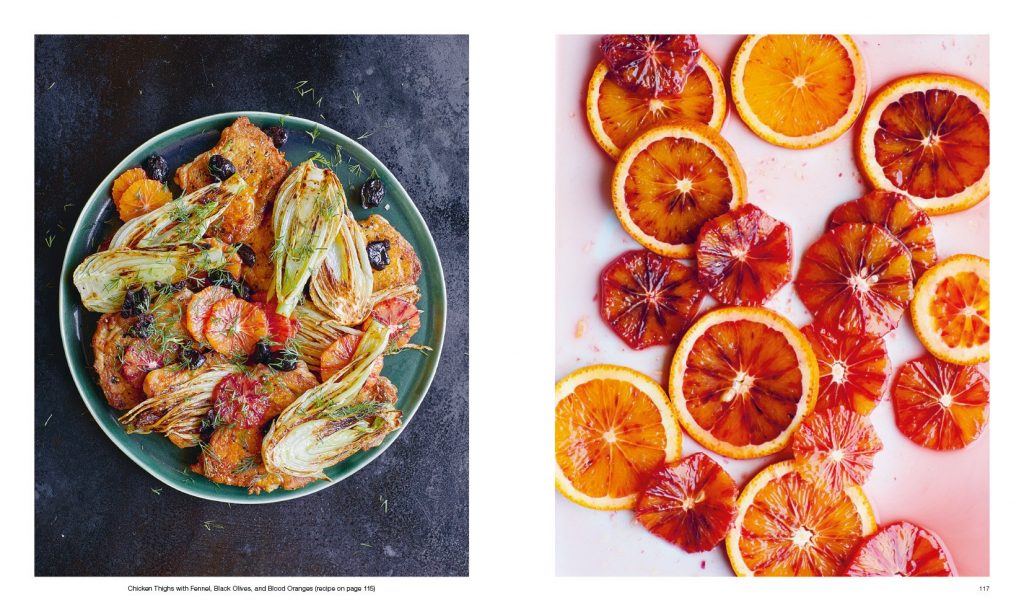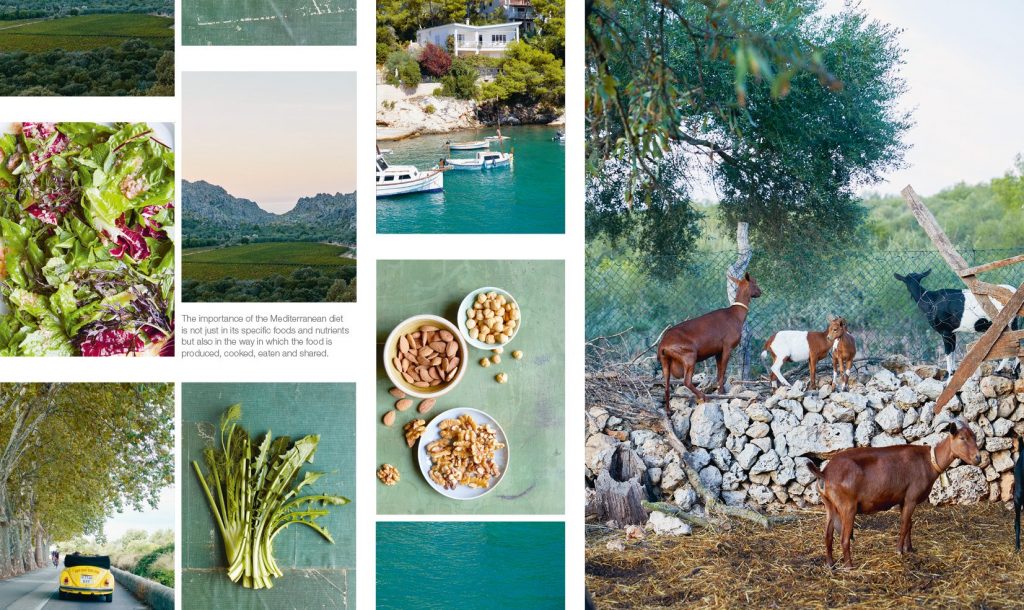Having grown up with Mediterranean dishes frequently served at the dinner table, Susie Theodorou’s latest book Mediterranean feels a bit superfluous in my kitchen. But for you, it should probably be the first book you buy on the subject as it’s one of the most authentic, least pretentious look at the cuisine in a long time. Theodorou is a London/New York-based food stylist with Greek-Cypriot parents, so it’s not surprising that her first cook book is stylishly understated and shows an intimate understanding of the Mediterranean lifestyle.
Photographed by John Kernick and styled by Theodorou, Mediterranean is as much a feast for the eyes as the belly, with glorious, full-page imagery of strikingly uncomplicated dishes, presented with equal aesthetic appreciation of the beauty of simplicity. Together with photos of rugged Mediterranean scenery, the book combines a thorough introduction and comprehensive breakdown by nutritionist Alina Tierney, outlining the benefits of the Mediterranean diet which was first recognised in the late 50s by American physiologist Ancel Keys. It’s thought that the cuisine is good for your health because it’s based largely upon fresh, seasonal vegetables, grains, legumes and olive oil with meat and fish being only occasional or minor additions – meaning that most native Mediterraneans enjoy very low rates of coronary heart disease.
 Recognised by UNESCO as an intangible Heritage, the cooking and eating traditions of the Mediterranean populations offer a salve for today’s fast-paced, on-the-run and out-of-a-packet eating habits. Focused mainly on the simple assemblage of choice ingredients, Theodorou’s book is less of a recipe book and more of a platform for sharing the ways of eating and the combination of flavours, highlighting the advantages of being a ‘clever cook – not a lazy cook’. Common ingredients you’ll come across are broad beans, chickpeas, cured fish, white cheese, figs, dates, lemons, parsley and of course olive oil – all a big part of the flavour profile of coastal Italy, Greece, France and Spain.
Recognised by UNESCO as an intangible Heritage, the cooking and eating traditions of the Mediterranean populations offer a salve for today’s fast-paced, on-the-run and out-of-a-packet eating habits. Focused mainly on the simple assemblage of choice ingredients, Theodorou’s book is less of a recipe book and more of a platform for sharing the ways of eating and the combination of flavours, highlighting the advantages of being a ‘clever cook – not a lazy cook’. Common ingredients you’ll come across are broad beans, chickpeas, cured fish, white cheese, figs, dates, lemons, parsley and of course olive oil – all a big part of the flavour profile of coastal Italy, Greece, France and Spain.
Lamb and pork feature heavily in the meat section, along with fish – with a leaning towards barbeques, grills and slow-roasting. Highlights are the Chickpeas with Spinach and Pork Shank, Fava Bean Stew, Risi Bisi with Farro and Butternut Squash and Sage Orecchiette. If you really want to know how a Mediterranean person eats, this book will give you an authentic glimpse into the kitchen practices of one of the healthiest and indeed tastiest diets in the world.
